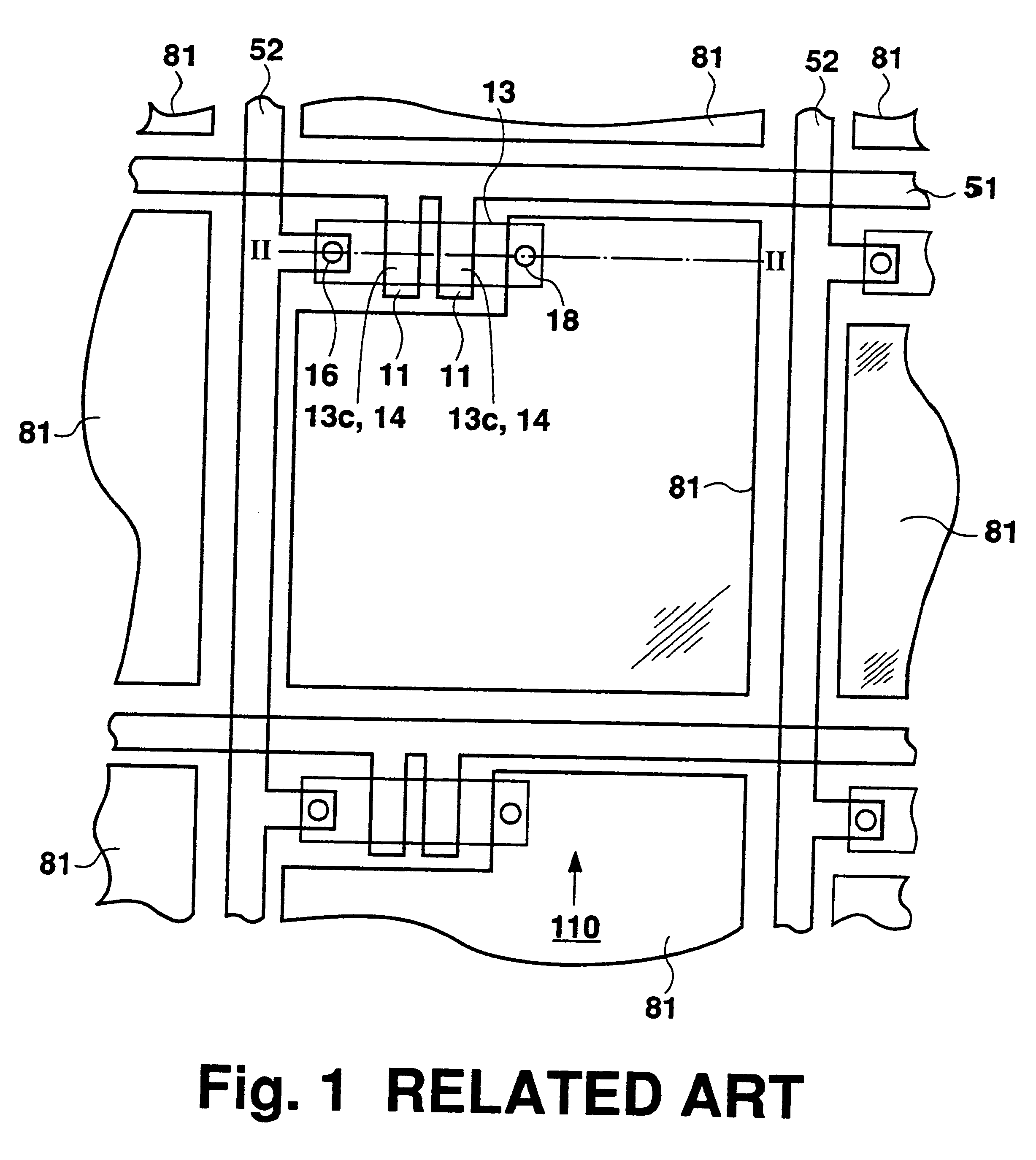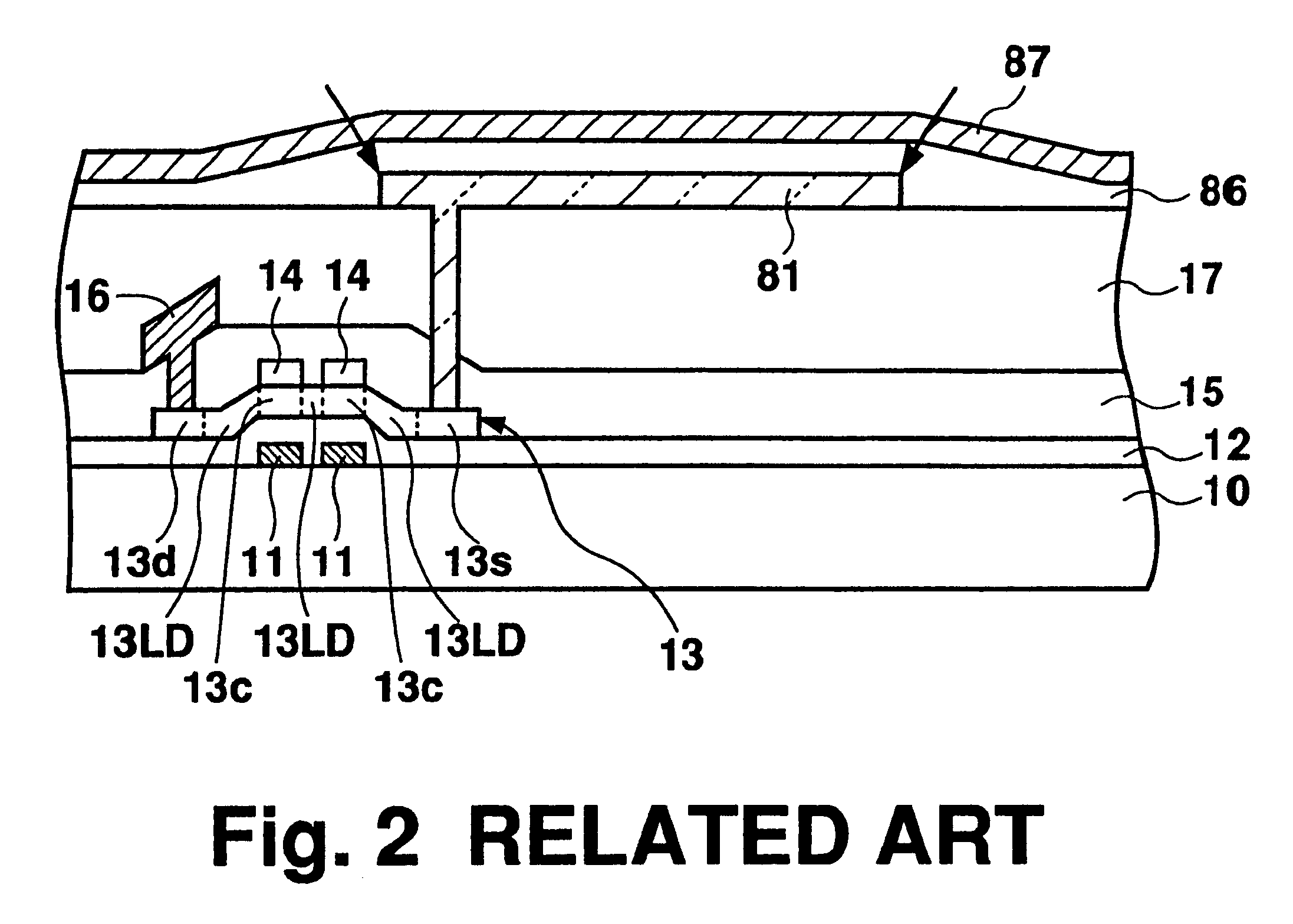Emissive element and display device using such element
a technology of emissive elements and display devices, which is applied in the direction of static indicating devices, discharge tubes luminescent screens, instruments, etc., can solve the problems of accelerating the deterioration of the emissive layer, pixel deficiency display, and irregular surface creation
- Summary
- Abstract
- Description
- Claims
- Application Information
AI Technical Summary
Benefits of technology
Problems solved by technology
Method used
Image
Examples
first embodiment
The present embodiment differs from the first embodiment in that only one TFT is provided for driving the EL element 60, and that the anode 61 is formed over the interlayer insulating film 15.
As shown in FIGS. 6 and 7, TFT 30 is disposed near a junction of a gate signal line 51 and a drain signal line 52. The source 13s of the TFT 30 is connected to the anode 61 of the organic EL element 60.
As shown in FIG. 7, the display pixel 110 is formed by sequentially laminating TFT and an organic EL element on a substrate 10 which may be an insulator substrate made of glass or synthetic resin, a conductive substrate, or a semiconductor substrate. When a conductive substrate or a semiconductor substrate is used as the substrate 10, an insulating film 32 made of materials such as SiO.sub.2 or SiN is deposited on the substrate 10 before forming the TFT.
As shown in FIG. 7, gate electrodes 11 composed of refractory metal such as Cr or Mo and a gate signal line 51 connected to the gate electrodes 1...
third embodiment
FIG. 8 is a cross-sectional view of an organic EL display device according to the present invention. The plan configuration of this embodiment is identical with the above-described FIG. 6, and FIG. 8 shows a cross-sectional view taken along line I--I in FIG. 6.
As shown in FIG. 8, the present embodiment differs from the second embodiment mainly in the structure between the source region 13s of TFT 30 and the anode 61 of the EL element. In the present embodiment, the contact holes formed in the interlayer insulating film 15 are filled with metal such as Al to provide the drain electrode 16 and the source electrode 18. The planarizing insulating film 17 is then deposited to planarize the surface. A contact hole is formed in the planarizing insulating film 17 at a location corresponding to the source electrode. Through this contact hole, the transparent electrode 61 is formed which is composed of a transparent conductive material such as ITO. Subsequently, the insulating film 19 is disp...
PUM
 Login to View More
Login to View More Abstract
Description
Claims
Application Information
 Login to View More
Login to View More - R&D
- Intellectual Property
- Life Sciences
- Materials
- Tech Scout
- Unparalleled Data Quality
- Higher Quality Content
- 60% Fewer Hallucinations
Browse by: Latest US Patents, China's latest patents, Technical Efficacy Thesaurus, Application Domain, Technology Topic, Popular Technical Reports.
© 2025 PatSnap. All rights reserved.Legal|Privacy policy|Modern Slavery Act Transparency Statement|Sitemap|About US| Contact US: help@patsnap.com



